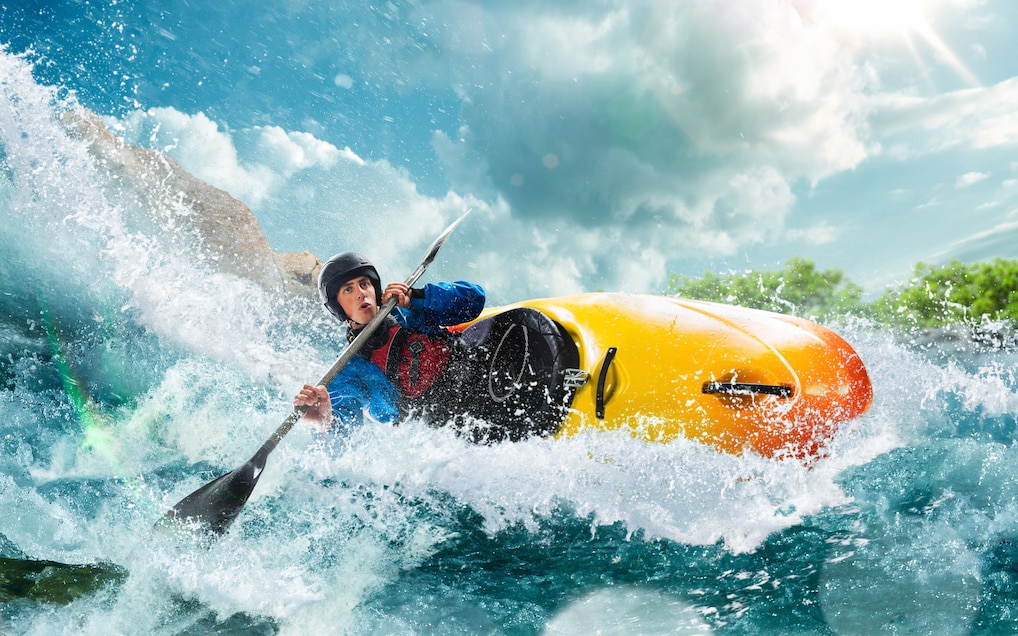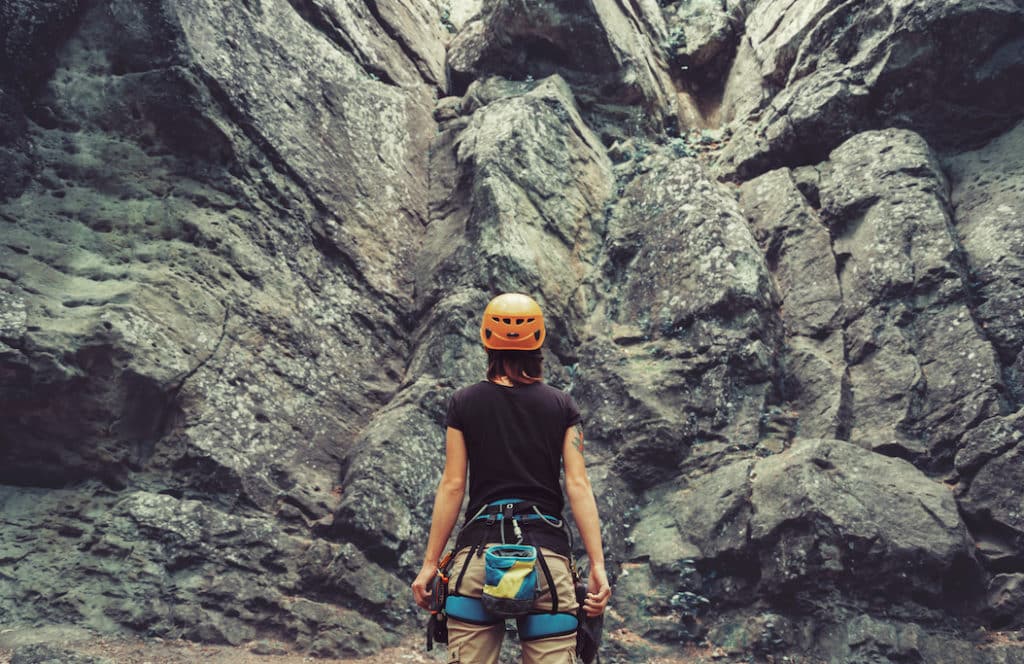Paddling Terminology and Slang: Nobody Says ‘Up a River Without an Oar’
Outdoor LingoWelcome to our third — and final segment in our series about sports terminology and slang terms. In this post, we’ll be talking about whitewater paddling, and right off the bat, we’ve got a warning for the novice paddler.
Those who might be unfamiliar with whitewater kayaking or canoeing might think rowing and paddling are the same thing. But those folks would have another think coming. Because nothing raises the hackles of a whitewater guide or enthusiast than hearing a newbie describe canoe and kayak propulsion as “rowing.” Strike One!
The only thing worse would be referring to a paddle as an oar. Paddles are used for paddling. Oars are used for rowing. Strike Two!
We apologize for the harsh tone, but we are professional educators and guides here at The National Center for Outdoor & Adventure Education (NCOAE), and our primary purpose today is to support you in your efforts to make yourself a more confident person when you emerge from the river. That means that, during the course of a conversation, if you were to say you were rowing a river and got your playboat stuck in a ‘sticky hole,” you would need to take a “wet exit” from the conversation without the opportunity for a “brace” or a “combat roll.” Fact!
So, let’s pack our dry bags, pull on our skirts and PFD’s and hit the river.
We’ll start with the name of the vehicle in which we will be paddling. Your first thought might be to call it a kayak. Don’t. Yes, in every design aspect and shape it’s a kayak. But when you talk about your kayak, you will be saying “boat.” No, really. We insist. And we understand you might be confused but trust the process.
Here are some terms you’ll need to know about the boat (kayak) and it is various and sundry accessories:
(more…)On Belay — Climbing Terminology and Slang
Outdoor LingoDid you hear the one about Rock and Ice magazine merging with Climbing magazine? It’s not a joke. That news was announced just today (Oct. 9, 2020), and it conveniently coincides with the next post in our series on outdoor industry lingo. With the assistance of The National Center for Outdoor & Adventure Education’s (NCOAE) outdoor lexicon support team (that’s me), most of you were able to make it through the first post in our outdoor industry lingo series — Surfing. And now, just when you thought it was safe to go back to regular English, you get to learn an entirely new language.
For today’s writeup, we’ve got you “on belay” with all the “beta” to get you through the “crux” of the lingo learning curve so you can “on site” any climbing conversation.
Holy crevasse! Why are all those terms in quotation marks? And what do they mean?
Pay attention, Grasshopper. While I can’t (won’t) give you the entire exhaustive list of climbing terms, I am going to go deeper into the nifty nomenclature of climbing. And the first thing you’re going to need to access in order to summit this speech peak, is the climber’s “bible.”
This 60-year-old book is called “Mountaineering: Freedom of the Hills,” and it’s available now in its 9th edition. So, if you want to climb or become a mountaineer, or if you just want to speak intelligently about the topic at climbers gathers or Zooms, get the book. Why? Look around you. Even the most ardent climbers, guides, and outdoor education professionals reference Freedom of the Hills.
So, let’s “tie in” and get you on the “sharp end” by the end of this post. We need to get you talking knowledgably about climbing.
I’m thinking we should start things off with how climbs are rated — the difficulty level. You might hear someone talk about climbing a 5.9 with a 5.12 pitch at the crux. And you don’t have a clue as to what that means. Bottom line? We’re referring to the “Yosemite Decimal System” (YDS).
The Yosemite system is a common and dynamic language. And like ardent surfers talking about big waves, nobody wants to claim they are climbing harder routes than they really are. It’s just too easy to prove that you’re exaggerating. So, is this YDS accurate? If you climb — or attempt to climb — you may come up with the answer yourself.
(more…)TALK TO US
Have any further questions about our courses, what you’ll learn, or what else to expect? Contact us, we’re here to help!

